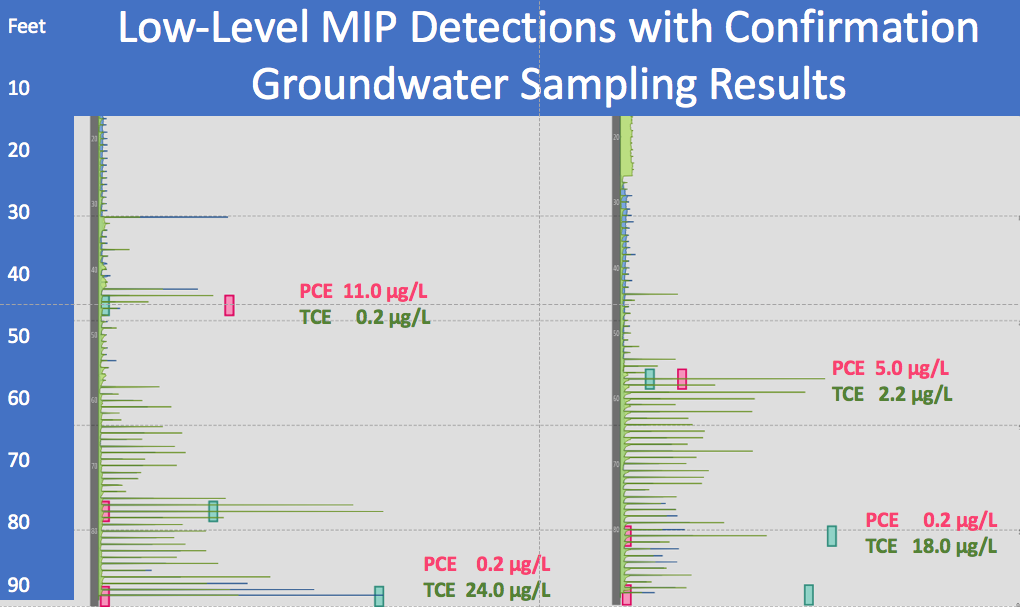Mature groundwater plumes for environmental contaminants pose a complex challenge with regards to accurate delineation of sources, vertical and lateral extent, dominant pathways, and likely storage zones for residual contaminants. It is not uncommon for plumes from multiple sources to commingle and diffuse across a relatively large distance and a varied hydrogeological spatial volume. As a result, uncertainty in the accuracy of the conceptual site model (CSM) increases, and in turn the associated risk assessment, and the costs contemplated for cleanup alternatives. Better data resolution and scale are required to reduce these uncertainties. Low-Level Membrane Interface Probe Technology with Hydraulic Profiling (HPT) provides one approach for obtaining cost-effective and reliable high-resolution data, at a more informative scale in order to improves CSMs and enable better decision-making.
The use of the Membrane Interface Probe (MIP) as a screening technology for VOCs has been established for over a decade. Numerous site conceptual models have aided by this high-resolution tool leading to expedited source area identification and delineation. The advantages and disadvantages of the technology have been well documented, though often not accurately or appropriately.
The development of Low-Level MIP technology represents a significant step forward in capability if properly configured and operated. Low-Level MIP provides an order of magnitude improvement in the performance; and often expands the technology’s detection capability down to drinking water action levels for a number of compounds of concern (COCs). Combined with HPT provides a powerful combination for mapping contaminant distribution and their relationship with hydrogeological environment at the site-wide scale.
.png?width=320&name=LL_MIP_w_Confirmation_GW_Samples_20170810%20(4).png)
Proper operation of the Low-Level MIP system with HPT requires an advanced level of understanding of chemistry, chromatography, and pneumatic system controls to ensure system reliability and accuracy. Critical to the proper employment is rigid demonstration of performance and quality control testing throughout the period of system use.
This presentation will provide you with:
- A working knowledge of the principles of operation of MIP and HPT
- Improvements provided by LL-MIP, key performance parameters, and proper interpretation of the data sets
- When and when not to consider the use of MIP, HPT, and LL-MIP.
- Case examples of where LL-MIP and HPT were combined with other lines of evidence to effectively track and map diffuse low level groundwater contaminant plumes to groundwater action levels.
PRESENTER:
John Sohl, is President & CEO of COLUMBIA Technologies and a Director of Columbia Technologies do Brasil Ltda, both global technology firms. He has managed over 2,000 high-resolution and direct sensing projects around the world over the past 25 years. John is the co-author of three US and two international patents involving direct sensors and the use of real-time information systems. He is 1972 graduate of the U.S. Naval Academy with a B.S. in Engineering and holds a M.B.A. from Chaminade University of Honolulu. John is a member of ASTM International and the Sustainable Remediation Forum.
CLICK HERE to schedule a conversation with John or a presentation for your technical team.




